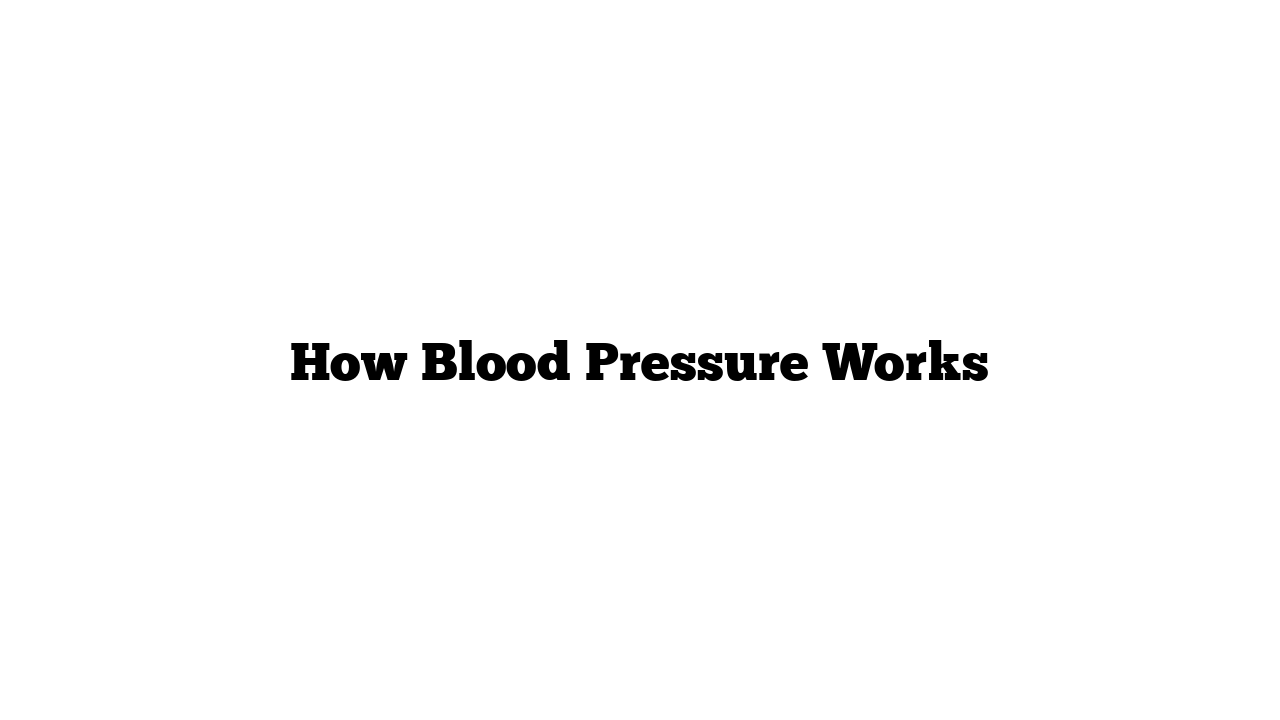The Circulatory System: An Overview
Did you know that if you lined up all the blood vessels in your body, they would stretch about 95,000 kilometers long? Every day, these vessels carry the equivalent of 7,500 liters of blood—though it’s actually the same four to five liters recycled continuously. This blood delivers vital oxygen and nutrients, such as glucose and amino acids, to the body’s tissues.
Understanding Blood Pressure
As blood flows through these vessels, it exerts a force on the muscular walls of the blood vessels. This force is known as blood pressure. Blood pressure fluctuates with the phases of the heartbeat:
- Systolic Pressure: This is the highest pressure in the arteries, occurring during systole, when the heart contracts and pumps blood into the arteries.
- Diastolic Pressure: This is the lowest pressure, measured during diastole, when the heart is at rest between beats.
For a typical healthy individual, systolic pressure ranges from 90 to 120 mmHg, and diastolic pressure ranges from 60 to 80 mmHg. Together, a normal reading is considered to be below 120/80 mmHg.
Factors Affecting Blood Pressure
Blood pressure can be influenced by several factors, similar to how pressure works in a plumbing system. Here are a few key contributors:
- Blood Viscosity: If blood thickens, more pressure is required to push it through the vessels, causing the heart to pump harder.
- Fluid Volume: A high-salt diet can lead to water retention, increasing blood volume and, consequently, blood pressure.
- Stress: Stress activates the fight-or-flight response, releasing hormones like epinephrine and norepinephrine that constrict blood vessels, increasing resistance to blood flow and raising pressure.
The Dangers of High Blood Pressure
Most blood vessels can handle normal fluctuations in pressure due to elastic fibers in their walls. However, when blood pressure regularly exceeds 140/90 mmHg, a condition known as hypertension occurs. This sustained high pressure can lead to serious health issues, such as:
- Atherosclerosis: The extra strain on arterial walls can cause small tears. When the tissue swells in response to injury, substances like white blood cells, fat, and cholesterol can accumulate at the site, forming plaque. This thickens and stiffens the arterial walls.
- Heart Attacks and Strokes: If plaque ruptures, a blood clot can form, blocking the flow of oxygen and nutrients. If this occurs in the heart, it leads to a heart attack; if it happens in the brain, it can cause a stroke.
Treatment for Clogged Arteries
When blood vessels become dangerously clogged, doctors may perform a procedure called angioplasty. This involves threading a wire through the vessel to the obstruction and placing a deflated balloon catheter over the wire. Inflating the balloon opens the passageway again. Sometimes, a stent (a rigid tube) is inserted to keep the vessel open, allowing blood to flow freely and replenish oxygen-starved cells.
Conclusion
Your arteries do a remarkable job of staying flexible and resilient under pressure. The blood they pump contains substances that can become sticky, and the average heart beats around 70 times a minute—adding up to at least 2.5 billion beats in a lifetime. Fortunately, your arteries are well-equipped to handle these challenges!
